Televisions have grown from black and white to color, from tube to transistor television, to integrated television, and to today’s intelligence. Today's television has entered millions of households, but how many people can understand the history of television development? Here is the development of the river along with Xiaobian into the TV.

1925: TV prototype talks about the birth of the TV. There is a British person whose name must be mentioned. John Lodge Baird, the father of the TV, used to increase the voltage and current in order to obtain a clear image. At 2000 volts, he accidentally hit the cable and almost died of electrocution.
Of course, Baird’s efforts have also been rewarded in the end. In 1925, Baird showed a very practical TV device in the UK. From the current point of view, Baird's mechanical equipment is very simple. This TV is basically made of waste.
Optical equipment is the lens of some bicycle lights. The frame is made of enamel pots, and the wire is a messy web of cobwebs. The biggest miracle is the poor quality of these materials. Once his arrangement, it can produce images, which have become the prototype of modern television.
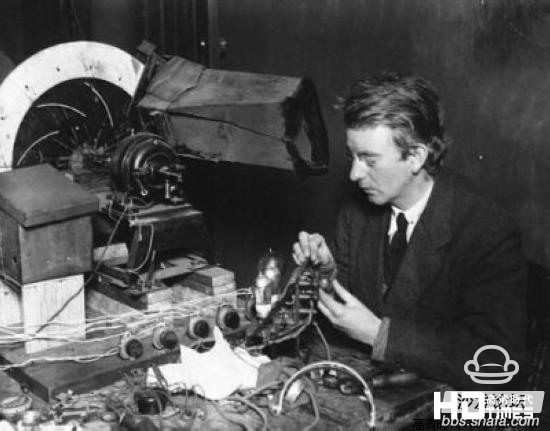
1939: After the first black-and-white television set in Baird invented a television device that can map images, this technology quickly developed by leaps and bounds. In the United States in 1939, the first black-and-white television set was born, April 30. On the same day, U.S. President Franklin D. Roosevelt gave a speech at the opening ceremony of the New York World Expo at the New York City Flasing Square. His audience included tens of thousands of guests on the spot and a small number of other people in New York City. The latter number is less than 200. They listen to the president's voice in a way that modern people are extremely familiar with - watching live television.
There are two protagonists in the opening ceremony of the New York World Expo: one is the leader who delivered a passionate speech, and the other is a television camera that is opposite him 50 feet away. At the New York World Expo, television became the most popular protagonist, in addition to the highways, skyscrapers, and so on.

1950: "Lazybones" Remote Control Available The "lazybones" remote control is connected to the TV via a cable. Five years later, Zenith's wireless remote control Flash-Matic was launched.

1954: The first color TV set in the 1950s was the era when televisions began to become popular. In 1953, the United States RCA set the National Color TV Standard, and in 1954 introduced the first color television set, by 1964, 31% of U.S. households own color television sets.
Although color television technology has been available for more than 10 years, the image quality at that time is still unflattering; the cost of the device is still high; people watching TV still prefer to watch black-and-white TV; and cable TV networks rarely broadcast color TV programs. . NBC broadcasts the largest number of color television programs just because its parent company, RCA, was the oldest color television manufacturer at the time.

1958: China's first black and white TV On March 17, 1958, this was the "birthday" of China's first black and white TV set. After the founding of New China, there has been no television broadcast in our country. In order to look abroad, in 1957, New China decided to develop its own television broadcasting business. At that time, the tenth inning of the second Ministry of Machinery Industry, the responsible department of the electronics industry, assigned the task of developing television launch center equipment to the Beijing Broadcasting Equipment Factory. The task of developing a television receiver was handed over to the state-owned Tianjin Radio Factory.
At that time, the state-owned Tianjin Radio Factory established a special task force with a total of eight people, all of whom were top-level technicians and workers in the factory. On the evening of March 17, 1958, China's TV center piloted a television program for the first time in Beijing.
The experimental hall is equipped with TV prototypes of the Soviet Union and China. At 7 o'clock in the evening, the picture of the broadcaster clearly appeared on the first TV screen in China and was accompanied by a loud voice. One hundred percent of the prototype tests passed. The first black and white television set in China was successfully developed.

1960: In the first presidential candidate televised debate, Senator JF Kennedy of Marseille took the audience from sweaty vice president Richard Nixon and won the election.
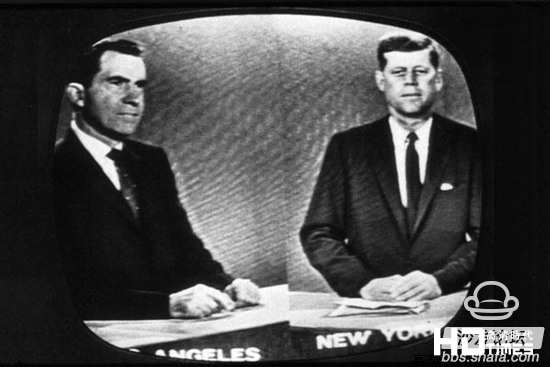
1967: The first Trinitron TV In the 1950s, although Sony TV's black-and-white television in Japan was sold, its technical competitiveness was not advantageous. All this changed in 1967. A young member of Sony's engineering team intelligently solved the persistent problem of color TVs: image distortion and light divergence. Sony claims this new product is "Trinity" (meaning raster color picture tube).
In 1968, Sony sold the first "Trinity" television. Smart consumers realize that Trinitron is a super product and the enthusiasm of consumers has contributed to Trinidad's success. Between 1968 and 1988, Sony sold more than 1.8 billion units of Trinitron, and Trinitron earned its reputation as "the hottest model ever".

1977: The first portable TV In the 1970s, it was still the era of rapid development of televisions. In 1973, digital technology was first used for television broadcasting. Experiments have shown that digital television can be used for satellite communications. In 1976, the United Kingdom completed the study of the "TV library" system, where users can search for news, books, or magazines directly on television.
In 1977, the United Kingdom developed the first batch of portable television sets, which made consumers realize that televisions can be carried on business trips in addition to their use in the living room.
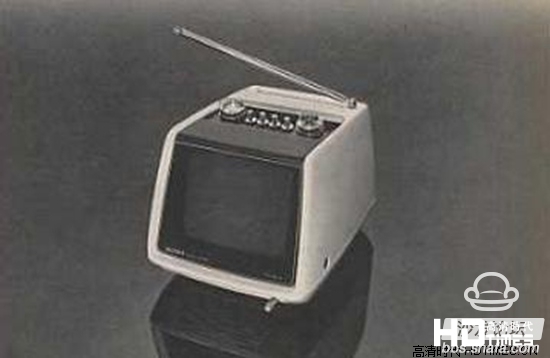
1979: NHK, a Japanese national broadcaster, invented Muse, a simulation system for high-resolution televisions. President Reagan stated that this technology is "about national interests."

1981: The Buggles "Video Kills Radio Singers" is MTV's first music video. In fact, TV smashed music videos.

1999: TiVo provides users with an unprecedented television control, including fast-forward skipping. Five years later, Janet Jackson's video on the Super Bowl became the most frequent replay in TiVo history.

2000: Healthy TV concept In the late 1990s, the homogenization competition of domestic TV sets was very serious. At that time, some domestic manufacturers often used the price/performance ratio of products as the focus of publicity to attract users with price cuts, but Skyworth did In 2000, the company launched the first healthy 1250 TV in China. This TV overcomes the shortcomings of flash, line flash, and line thickness in analog TVs and is compatible with HDTV.
At the same time, Skyworth also closely followed the trend of foreign countries to launch a progressive TV. Its "not flash, it is healthy," the brand slogan makes consumers familiar, Skyworth "health TV" enjoys popular support.

2008: Hyundai showcases a consumer-grade 3D TV for the first time in Japan, the 46-inch E465S. However, the price of 5000 knives is really eye-dropping. In 2010, the Toshiba Regza GL1 series of naked-eye 3D TVs ended that stupid pair of glasses.
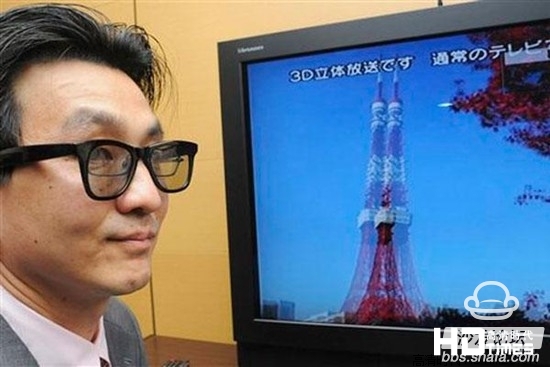
2011: Cloud TV Cloud concept products became a hot spot in the smart home appliance market in 2011. In August 2011, Skyworth introduced the world's first cloud TV.
This product was pioneered with a cloud platform and a smart Android operating system. It enables various cloud-based personalized applications such as cloud space, cloud services, cloud communities, cloud browsing, cloud search, and cloud applications to be on the TV, Tablet PCs and other mobile devices are interconnected. The cloud server provides data processing and resource integration for the background, allowing users to share videos, photos, and data anytime, anywhere.

2008: China's first domestic plasma screen TV Since Changhong officially launched plasma screen project in 2007, Changhong, together with Rainbow and US MP, invested 675 million US dollars into the plasma screen project for the first time; in July 2008, it was put into production. The annual production of plasma screens reached 2.16 million (measured in 42′′).
Through three phases of construction, the total investment exceeds 2 billion U.S. dollars, and the capacity of producing 6 million plasma modules per year has reached the ranks of the world's top four. The first phase of the plasma project is expected to reach volume production in 2008. This will be the first plasma screen multi-faceted production line in China. It will mainly produce plasma screens with sizes of 42, 50 inches and larger.

2011: Brainwave TV When TV display technology is very mature today, will there be new changes in future TV products? Perhaps control will become a new breakthrough point. On July 18, 2011, the world’s first brainwave television was debuted at the “Shanghai Casadee Press Conferenceâ€. Haier's epoch-making TV's remote control is accomplished through an electroencephalogram headset.
This special brainwave headset can detect the user's brainwave signal and identify the user's state and convert it into a digital signal that the television can recognize. In the future, we no longer need a TV remote control. Is free to use their own will to control the TV switch, switch channels.

2012: 4K TV On the last day of 2013, Skyworth released the country’s first 4K home Internet TV. The TV piloted by Wes WeChat was launched to the market earlier. At the same time, TCL announced that its joint sales of iQiyi's online TV has exceeded 100,000 units. Entering into 2014, TV manufacturers will speed up and use different methods to reach the "network", and they want to inject vitality into the depressed TV market.
According to the latest statistics from Aowei Consulting, the sales volume of color TV reached 47.85 million units in 2013, a year-on-year increase of 12.7%, which is a significant increase from the previous year. The Internet factor is the key to “rescueâ€.
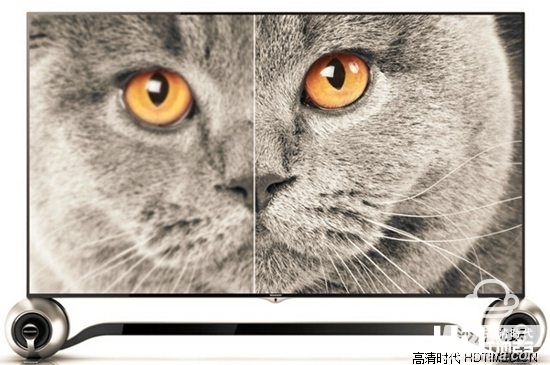
2014: The world's first 105-inch curved UHD TV The world’s first 105-inch curved UHD TV was launched by Samsung Electronics. Debuted at the 2014 CES held on January 7, 2014 in Las Vegas, Samsung Electronics took the lead in launching a global market-oriented curved UHD TV product line, and released the 2014 latest surface TV and UHD TV lineup.


1925: TV prototype talks about the birth of the TV. There is a British person whose name must be mentioned. John Lodge Baird, the father of the TV, used to increase the voltage and current in order to obtain a clear image. At 2000 volts, he accidentally hit the cable and almost died of electrocution.
Of course, Baird’s efforts have also been rewarded in the end. In 1925, Baird showed a very practical TV device in the UK. From the current point of view, Baird's mechanical equipment is very simple. This TV is basically made of waste.
Optical equipment is the lens of some bicycle lights. The frame is made of enamel pots, and the wire is a messy web of cobwebs. The biggest miracle is the poor quality of these materials. Once his arrangement, it can produce images, which have become the prototype of modern television.

1939: After the first black-and-white television set in Baird invented a television device that can map images, this technology quickly developed by leaps and bounds. In the United States in 1939, the first black-and-white television set was born, April 30. On the same day, U.S. President Franklin D. Roosevelt gave a speech at the opening ceremony of the New York World Expo at the New York City Flasing Square. His audience included tens of thousands of guests on the spot and a small number of other people in New York City. The latter number is less than 200. They listen to the president's voice in a way that modern people are extremely familiar with - watching live television.
There are two protagonists in the opening ceremony of the New York World Expo: one is the leader who delivered a passionate speech, and the other is a television camera that is opposite him 50 feet away. At the New York World Expo, television became the most popular protagonist, in addition to the highways, skyscrapers, and so on.

1950: "Lazybones" Remote Control Available The "lazybones" remote control is connected to the TV via a cable. Five years later, Zenith's wireless remote control Flash-Matic was launched.

(TV remote control)
1954: The first color TV set in the 1950s was the era when televisions began to become popular. In 1953, the United States RCA set the National Color TV Standard, and in 1954 introduced the first color television set, by 1964, 31% of U.S. households own color television sets.
Although color television technology has been available for more than 10 years, the image quality at that time is still unflattering; the cost of the device is still high; people watching TV still prefer to watch black-and-white TV; and cable TV networks rarely broadcast color TV programs. . NBC broadcasts the largest number of color television programs just because its parent company, RCA, was the oldest color television manufacturer at the time.

1958: China's first black and white TV On March 17, 1958, this was the "birthday" of China's first black and white TV set. After the founding of New China, there has been no television broadcast in our country. In order to look abroad, in 1957, New China decided to develop its own television broadcasting business. At that time, the tenth inning of the second Ministry of Machinery Industry, the responsible department of the electronics industry, assigned the task of developing television launch center equipment to the Beijing Broadcasting Equipment Factory. The task of developing a television receiver was handed over to the state-owned Tianjin Radio Factory.
At that time, the state-owned Tianjin Radio Factory established a special task force with a total of eight people, all of whom were top-level technicians and workers in the factory. On the evening of March 17, 1958, China's TV center piloted a television program for the first time in Beijing.
The experimental hall is equipped with TV prototypes of the Soviet Union and China. At 7 o'clock in the evening, the picture of the broadcaster clearly appeared on the first TV screen in China and was accompanied by a loud voice. One hundred percent of the prototype tests passed. The first black and white television set in China was successfully developed.

1960: In the first presidential candidate televised debate, Senator JF Kennedy of Marseille took the audience from sweaty vice president Richard Nixon and won the election.

1967: The first Trinitron TV In the 1950s, although Sony TV's black-and-white television in Japan was sold, its technical competitiveness was not advantageous. All this changed in 1967. A young member of Sony's engineering team intelligently solved the persistent problem of color TVs: image distortion and light divergence. Sony claims this new product is "Trinity" (meaning raster color picture tube).
In 1968, Sony sold the first "Trinity" television. Smart consumers realize that Trinitron is a super product and the enthusiasm of consumers has contributed to Trinidad's success. Between 1968 and 1988, Sony sold more than 1.8 billion units of Trinitron, and Trinitron earned its reputation as "the hottest model ever".

1977: The first portable TV In the 1970s, it was still the era of rapid development of televisions. In 1973, digital technology was first used for television broadcasting. Experiments have shown that digital television can be used for satellite communications. In 1976, the United Kingdom completed the study of the "TV library" system, where users can search for news, books, or magazines directly on television.
In 1977, the United Kingdom developed the first batch of portable television sets, which made consumers realize that televisions can be carried on business trips in addition to their use in the living room.

1979: NHK, a Japanese national broadcaster, invented Muse, a simulation system for high-resolution televisions. President Reagan stated that this technology is "about national interests."

1981: The Buggles "Video Kills Radio Singers" is MTV's first music video. In fact, TV smashed music videos.

1999: TiVo provides users with an unprecedented television control, including fast-forward skipping. Five years later, Janet Jackson's video on the Super Bowl became the most frequent replay in TiVo history.

2000: Healthy TV concept In the late 1990s, the homogenization competition of domestic TV sets was very serious. At that time, some domestic manufacturers often used the price/performance ratio of products as the focus of publicity to attract users with price cuts, but Skyworth did In 2000, the company launched the first healthy 1250 TV in China. This TV overcomes the shortcomings of flash, line flash, and line thickness in analog TVs and is compatible with HDTV.
At the same time, Skyworth also closely followed the trend of foreign countries to launch a progressive TV. Its "not flash, it is healthy," the brand slogan makes consumers familiar, Skyworth "health TV" enjoys popular support.

2008: Hyundai showcases a consumer-grade 3D TV for the first time in Japan, the 46-inch E465S. However, the price of 5000 knives is really eye-dropping. In 2010, the Toshiba Regza GL1 series of naked-eye 3D TVs ended that stupid pair of glasses.

2011: Cloud TV Cloud concept products became a hot spot in the smart home appliance market in 2011. In August 2011, Skyworth introduced the world's first cloud TV.
This product was pioneered with a cloud platform and a smart Android operating system. It enables various cloud-based personalized applications such as cloud space, cloud services, cloud communities, cloud browsing, cloud search, and cloud applications to be on the TV, Tablet PCs and other mobile devices are interconnected. The cloud server provides data processing and resource integration for the background, allowing users to share videos, photos, and data anytime, anywhere.

2008: China's first domestic plasma screen TV Since Changhong officially launched plasma screen project in 2007, Changhong, together with Rainbow and US MP, invested 675 million US dollars into the plasma screen project for the first time; in July 2008, it was put into production. The annual production of plasma screens reached 2.16 million (measured in 42′′).
Through three phases of construction, the total investment exceeds 2 billion U.S. dollars, and the capacity of producing 6 million plasma modules per year has reached the ranks of the world's top four. The first phase of the plasma project is expected to reach volume production in 2008. This will be the first plasma screen multi-faceted production line in China. It will mainly produce plasma screens with sizes of 42, 50 inches and larger.

2011: Brainwave TV When TV display technology is very mature today, will there be new changes in future TV products? Perhaps control will become a new breakthrough point. On July 18, 2011, the world’s first brainwave television was debuted at the “Shanghai Casadee Press Conferenceâ€. Haier's epoch-making TV's remote control is accomplished through an electroencephalogram headset.
This special brainwave headset can detect the user's brainwave signal and identify the user's state and convert it into a digital signal that the television can recognize. In the future, we no longer need a TV remote control. Is free to use their own will to control the TV switch, switch channels.

2012: 4K TV On the last day of 2013, Skyworth released the country’s first 4K home Internet TV. The TV piloted by Wes WeChat was launched to the market earlier. At the same time, TCL announced that its joint sales of iQiyi's online TV has exceeded 100,000 units. Entering into 2014, TV manufacturers will speed up and use different methods to reach the "network", and they want to inject vitality into the depressed TV market.
According to the latest statistics from Aowei Consulting, the sales volume of color TV reached 47.85 million units in 2013, a year-on-year increase of 12.7%, which is a significant increase from the previous year. The Internet factor is the key to “rescueâ€.

2014: The world's first 105-inch curved UHD TV The world’s first 105-inch curved UHD TV was launched by Samsung Electronics. Debuted at the 2014 CES held on January 7, 2014 in Las Vegas, Samsung Electronics took the lead in launching a global market-oriented curved UHD TV product line, and released the 2014 latest surface TV and UHD TV lineup.
